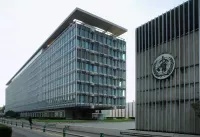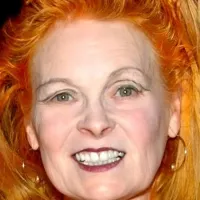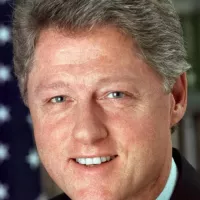The yellow fever vaccine provides protection against the yellow fever virus, prevalent in Africa and South America. Immunity typically develops within ten days of vaccination, with 99% protection achieved within a month, offering what appears to be lifelong immunity. The vaccine is effective for controlling disease outbreaks. It is administered via injection, either intramuscularly or subcutaneously.
1912: Increased global exposure to yellow fever
In 1912, the opening of the Panama Canal increased global exposure to yellow fever. This event led to the first modern attempts to develop a yellow fever vaccine.
1937: Discovery of the 17D strain
In 1937, Max Theiler, Hugh Smith, and Eugen Haagen at the Rockefeller Foundation discovered the 17D strain, a highly effective attenuated virus. Theiler also used chicken eggs to culture the virus, following the work of Ernest Goodpasture.
1938: Yellow fever vaccine in use
In 1938, the yellow fever vaccine came into use. It is composed of a weakened yellow fever virus and is included on the World Health Organization's List of Essential Medicines. Certain countries mandate a yellow fever vaccination certificate for travelers arriving from countries where the disease is prevalent.
1939: Widespread vaccination with 17D strain
By 1939, after field trials in Brazil, over one million people had been vaccinated with the 17D strain without severe complications.
1941: Hepatitis B outbreak and safer alternative vaccine
In 1941, researchers at Rocky Mountain Laboratories developed a safer "aqueous-base" version of the 17D vaccine using distilled water combined with the virus grown in chicken eggs.
1942: Hepatitis B outbreak
Between 1941 and 1942, Theiler's vaccine was responsible for the largest outbreak of hepatitis B in history, infecting 330,000 soldiers and giving 50,000 jaundice.
1951: Theiler receives Nobel Prize
In 1951, Max Theiler received the Nobel Prize in Physiology or Medicine for his work on the yellow fever vaccine.
1961: FNV not recommended after 1961
The French neurotropic vaccine (FNV) was not recommended after 1961 due to a higher incidence of encephalitis.
1970: Cases of yellow fever reported between 1970 and 2002
Between 1970 and 2002, only nine cases of yellow fever were reported in unvaccinated travelers from the United States and Europe who traveled to West Africa and South America, and 8 of the 9 died.
1971: Screening technology for HBV available
Since 1971, screening technology for HBV has been available and is routinely used in situations where HBV contamination is possible including vaccine preparation.
1988: Nonfatal case of yellow fever in vaccinated traveler
In 1988, there was only one documented nonfatal case of yellow fever in a vaccinated traveler from Spain who visited several West African countries.
1996: System failure cases after vaccination
In 1996–2001, seven people developed system failure within two to five days of the yellow fever vaccine. The CMAJ article cites that "3 demonstrated histopatholic changes consistent with wild yellow fever virus."
2001: CMAJ article on yellow fever vaccination
In 2001, the Canadian Medical Association Journal (CMAJ) published an article entitled "Yellow fever vaccination: be sure the patient needs it". The article highlighted instances of system failure and deaths following vaccination, even in travelers to regions without reported yellow fever.
2002: Cases of yellow fever reported between 1970 and 2002
Between 1970 and 2002, only nine cases of yellow fever were reported in unvaccinated travelers from the United States and Europe who traveled to West Africa and South America, and 8 of the 9 died.
2010: CDC Yellow Book on yellow fever cases
In 2010, the online edition of the Center for Disease Control Traveler's Health Yellow Book stated that between 1970 and 2002 only "nine cases of yellow fever were reported in unvaccinated travelers from the United States and Europe who traveled" to West Africa and South America, and 8 of the 9 died.
2011: Gavi-supported vaccination campaigns
Since 2011, Gavi-supported vaccination campaigns have covered 88 million people in 14 countries considered at "high-risk" of a yellow fever outbreak.
May 2013: WHO announces yellow fever booster dose unnecessary
On 17 May 2013, the World Health Organization (WHO) Strategic Advisory Group of Experts on immunization (SAGE) announced that a booster dose of yellow fever (YF) vaccine, ten years after a primary dose, is not necessary.
2013: UNICEF reports insufficient vaccine supplies in 2013
UNICEF reported in 2013 that supplies of the yellow fever vaccine were insufficient, with manufacturers producing about 35 million of the 64 million doses needed per year.
2014: Projected vaccine demand by 2014
Demand for yellow fever vaccine for preventive campaigns has increased from about five million doses per year to a projected 62 million per year by 2014.
March 2016: Emergency stockpiles of vaccine diverted to Angola
In March 2016, emergency stockpiles of yellow fever vaccine diverted to Angola, which consisted of about 10 million doses, had become exhausted.
May 2016: Stockpiles replenished
By May 2016, the emergency stockpiles of yellow fever vaccine diverted to Angola were being replenished.
June 2016: WHO agrees to fractional dose usage
On 17 June 2016, the WHO agreed to the use of one-fifth the usual dose of yellow fever vaccine as an emergency measure during the ongoing outbreak in Angola and the DR Congo.
2018: Newer vaccines in development
As of 2018, newer yellow fever vaccines, based on vero cells, are in development.
January 2019: Yellow fever vaccine safety
As of January 2019, the yellow fever 17D vaccine is considered safe, with over 500 million doses given and very few documented cases of vaccine-associated illness (62 confirmed cases and 35 deaths).
February 2021: UNICEF reports contract prices
As of February 2021, UNICEF reported awarded contract prices for the yellow fever vaccine ranging from US$0.97 to US$1.444 per dose under multi-year contracts with various suppliers.
Mentioned in this timeline
The United States of America is a federal republic located...
Africa is the second-largest and second-most populous continent comprising of...

The World Health Organization WHO is a specialized agency of...
Russia officially the Russian Federation is a transcontinental country spanning...

Books are a means of storing information as text or...
Spain officially the Kingdom of Spain is a large country...
Trending

19 hours ago Emily Blunt Shines in Ruffled Ralph Lauren at ELLE Women in Hollywood Event

Derek Hough is a multifaceted American entertainer renowned primarily for his dancing prowess He achieved widespread fame as a professional...
3 months ago Mexico Transfers 26 Cartel Members to US in Accord with Trump Administration.
8 months ago Ecuador Oil Spill: Pipeline Rupture Causes Emergency, Export Cuts, and Sales Limbo

2 months ago Analyst Predicts Jaylen Brown Could Be in the MVP Conversation in 2025-2026 NBA Season

Braxton Berrios is an American professional football wide receiver and return specialist currently playing in the NFL He played college...
Popular

XXXTentacion born Jahseh Dwayne Ricardo Onfroy was a controversial yet...

Cristiano Ronaldo often nicknamed CR is a Portuguese professional footballer...

William Franklin Graham III commonly known as Franklin Graham is...

Candace Owens is an American conservative political commentator and author...

Vivienne Westwood was a highly influential English fashion designer and...

Bill Clinton the nd U S President - served as...